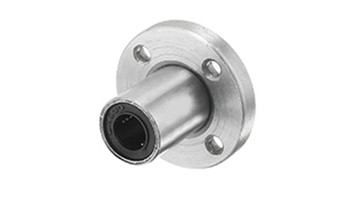Design Considerations for Ejector Pin Injection Molding
Optimizing Ejector Pin Injection Molding Design
When introducing ejector pin injection molding into the manufacturing process, automation has been achieved, enhancing production speed while ensuring a more efficient product outcome. Furthermore, it has contributed to achieving greater design consistency. Despite the advancements brought about by injection molding, there remain design flaws that require optimization for superior and more effective products.
This article centers around ejector pin injection molding and delves into how to optimize its design for more efficient product outcomes.
What is Ejector Pin Injection Molding?
Ejector pins play a vital role in part manufacturing. They are integral components of the mold’s ejection system, which significantly impacts the final result of the injection molding process. Injection molding is a manufacturing process involving injecting molten plastic into a metallic mold to replicate the mold’s shape. Ejector pin injection molding involves extracting the finished part from the mold. The metallic mold consists of two halves: the A side and the B side. After the molten material inside the mold cools down, the two halves of the metallic mold are separated to facilitate the removal of the solidified plastic. The design of the injection mold causes the A side to elevate as they open, leaving the molded component on the B side.
Ejector pins are located on the B side of the mold and are responsible for pushing the molded part out of the mold. The impression left by the ejector pin is often imprinted as a cavity mark on the finished product.
Types of Ejector Pins
Several types of ejector pins are used in product manufacturing. The following outlines the most common types that are best suited for this process.
- Solid Ejector Pins: These pins undergo heat treatment to ensure consistent hardness throughout their diameter. Solid ejector pins can withstand working temperatures of up to 200°C, making them ideal for plastic ejection systems within molds.
- Surface-Hardened Ejector Pins: Also known as H13 nitride pins, they are significantly harder than solid pins and are well-suited for die-casting ejection systems within molds. Surface-hardened pins are nitride-treated to reach a hardness of 65 – 70 HRC and can withstand temperatures above 200°C.
- Black Ejector Pins: Developed as an alternative to Nitride H13 pins, black ejector pins are subjected to a black surface treatment that imparts self-lubrication and the capability to withstand temperatures as high as 1000°C. Although relatively expensive, black ejector pins are suitable for metallic ejection systems in automotive molds.
Design Considerations for Injection Molding
Effective injection mold design must align with planned operations. Design errors may result in part cracking or shrinkage, which can prove too costly or burdensome to rectify.
Therefore, the necessity for well-structured design is crucial, and several factors can be taken into consideration.
- Implementing Ejection Angles: Ejection angles are inclined shapes applied to both sides of the injection mold, creating a slight deformation in the mold’s shape to facilitate easy plastic removal.
- Ensuring Uniform Wall Thickness: When molten material is poured into a mold with uniform wall thickness, it flows freely, filling the cavities within the mold walls and adopting the intended shape.
- Ensuring Rounded Edges: Incorporating rounded edges on both the inner and outer sides of the part reduces stress concentration and prevents part cracking.
- Minimizing Undercuts: Undercuts are prominent features in mold design that obstruct the removal of either side of the mold.
- Gate Placement: A gate is the entry point through which molten plastic enters the mold.
- Material Properties: The choice of material type should be determined by the product’s functionality.
In conclusion, ensuring successful ejector pin injection molding hinges on well-executed design, considering crucial factors. By incorporating features like ejection angles, uniform wall thickness, rounded edges, minimizing undercuts, appropriate gate placement, and selecting suitable material properties, manufacturers can create molds that yield superior, efficient, and cost-effective products.





